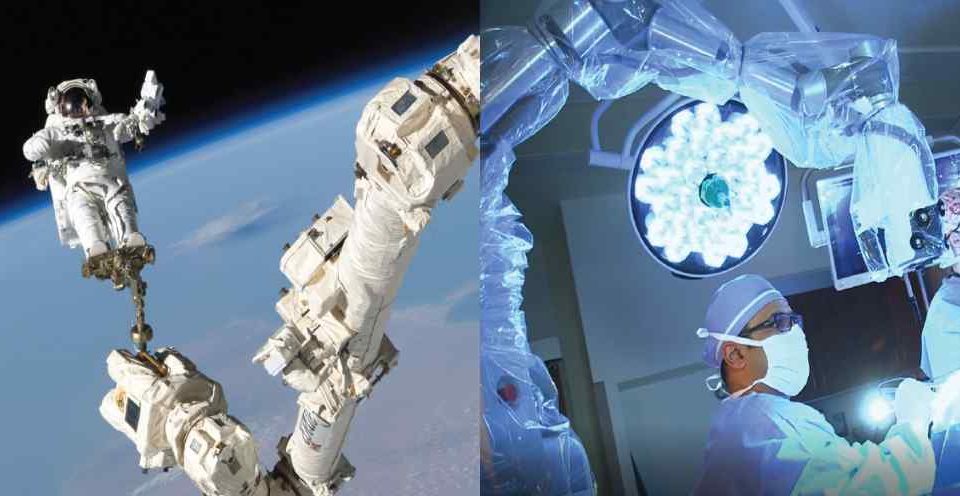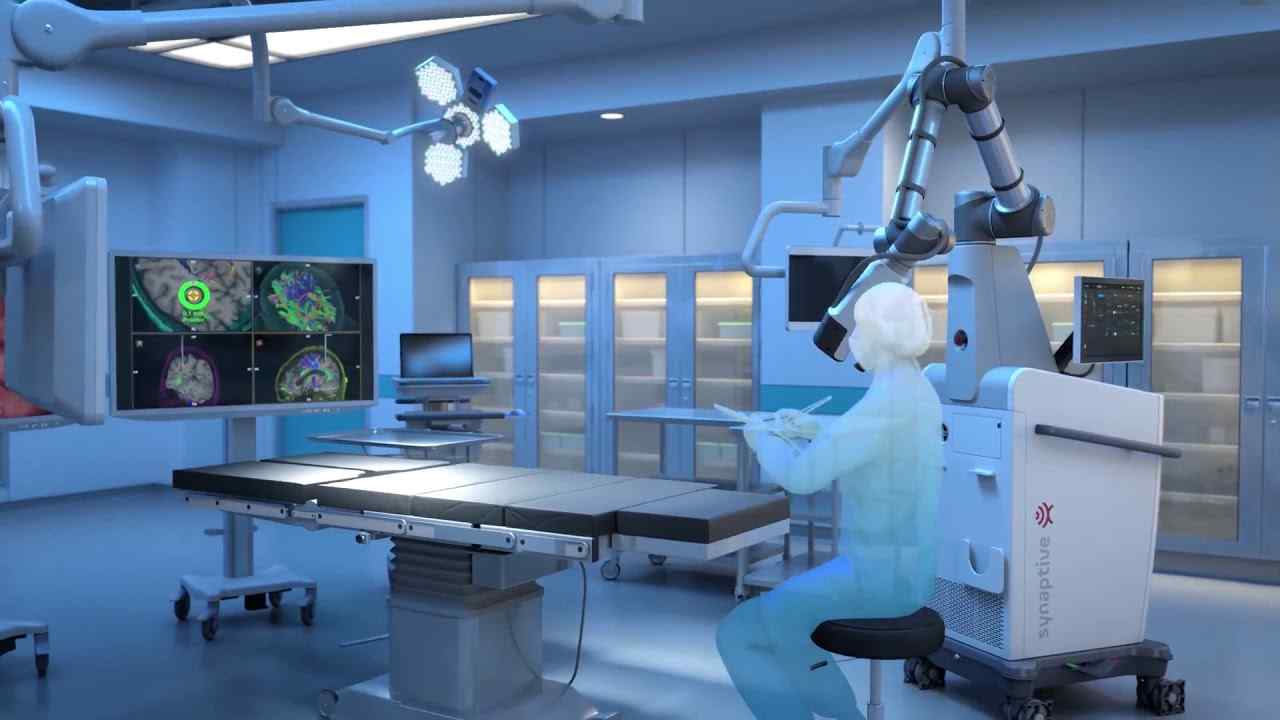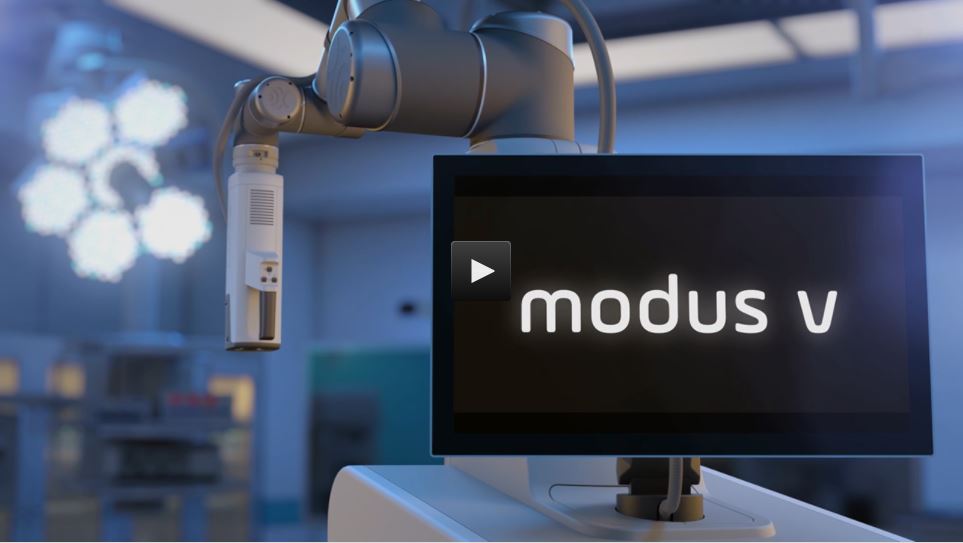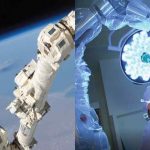Neurosurgeons successfully used robotic technology derived from International Space Station to perform brain tumor surgery

On February 22, 2018, NASA showcased Synaptive’s Robotics Modus V digital robotic surgical microscope, in a documentary titled: “Benefits for Humanity: From Space to Surgery.” The documentary explores the space robotics origins of Synaptive Medical’s robotic digital microscopes, Modus V and BrightMatter Drive. The video examines how technology originally used to create Canadarm2 on the International Space Station has been adapted to healthcare and is now benefiting patients with brain cancer and spine diseases. Modus V was developed by Synaptive Medical, a Toronto, Canada firm.
Now neurosurgeons at North Shore University Hospital (NSUH) have successfully used the technology to perform brain surgery on humans. The hospital announced in a release that the same technology has been integrated by NSUH neurosurgeons in a medical first in the tri-state area. Synaptive’s Modus V is a fully-automated, robotic digital microscope to perform brain surgery developed by Synaptive Medical Inc.’s Modus V. Modus V, with its robotic arm derived from Canadarm technology used on the International Space Station.
It was the same robotic arm technology used by NASA to deploy, capture and repair satellites in space. “Modus V enables neurosurgeons to perform delicate brain surgery with much more precision, potentially allowing for less-invasive procedures that lead to quicker recovery times and reduced complications,” said Michael Schulder, MD, director of the Brain Tumor Center at Northwell Health’s Neuroscience Institute, and the leader of the Synaptive Technology project at NSUH. “The technology allows for increased surgical efficiency through hands-free control, better ergonomics during brain surgery and greater versatility in the operating room. The digital microscope’s high-definition images offer a wider view of the surgical field and more enhanced images, improving the neurosurgeon’s ability to perform even the most complex brain surgery.”

The new robotic imaging technology was used during surgery on March 30, performed by cerebrovascular neurosurgeon Henry Woo, MD, to remove a meningioma from Joseph Ventimiglia, of East Setauket, NY. “The Synaptive Modus V incorporates multiple technologies including digital operative microscopy and robotics into a single seamless integrated platform,” said Dr. Woo. “The technology allows surgeons to more efficiently utilize and incorporate preoperative imaging modalities during procedures that will hopefully shorten procedure times and improve outcomes.
In this case, I was able to see around a bony edge to better visualize the tumor’s attachment to the dura and sagittal sinus at an angle that would have been impossible with a standard surgical microscope.” Modus V has the benefits of automated robotics and hands-free positioning with tracked instrumentation, allowing the surgeon to achieve desired visualization angles without disrupting the workflow. Another advantage is the device’s novel version of “auto focus,” which allows the image to stay focused on the tip of the surgeon’s instrumentation, refocusing as the surgeon works in different areas of the anatomy.
In conjunction with the Modus V robotic digital microscope, Synaptive’s BrightMatter™ software platform displays automated, whole brain tractography, mapping out the patient’s fiber tracts in the brain using magnetic resonance imaging (MRI). This information is then integrated into the intraoperative navigation screen during surgery. The images are displayed alongside the digital microscope’s optical image in real time to ensure the least disruptive path is taken without damaging nearby healthy tissue.
“The Synaptive Modus V represents the next step in the evolution of neurosurgical technology that allows improved access and increased versatility for a wide variety of neurosurgical procedures, including patients with brain tumors, cerebrovascular conditions and many disorders of the spine as well,” said Dr. Schulder. “The combination of maximal information of brain function, as well as improved intraoperative visualization, has the potential to make brain surgery as safe and as effective as possible.”




